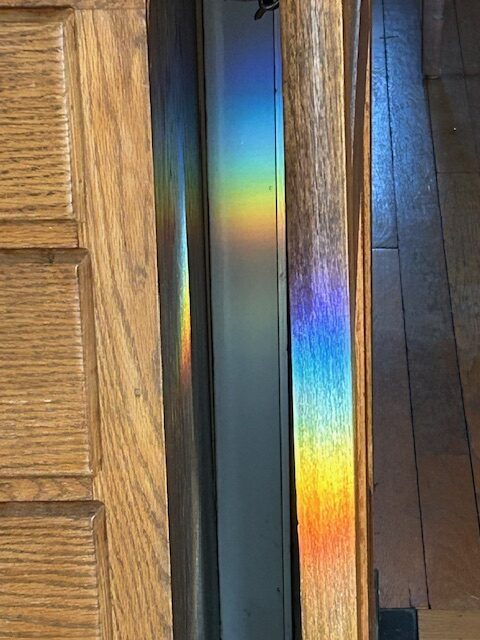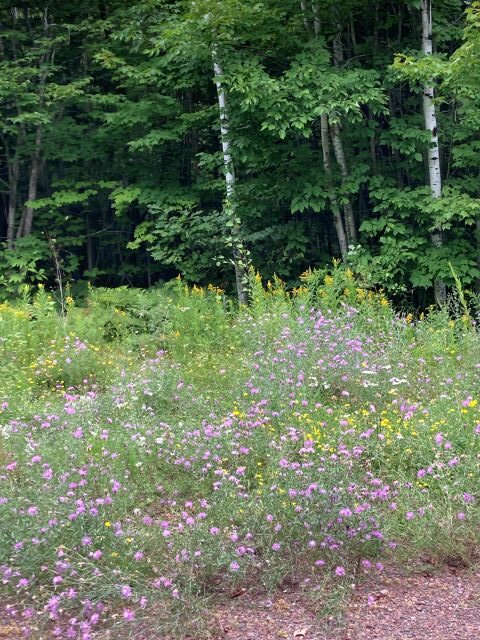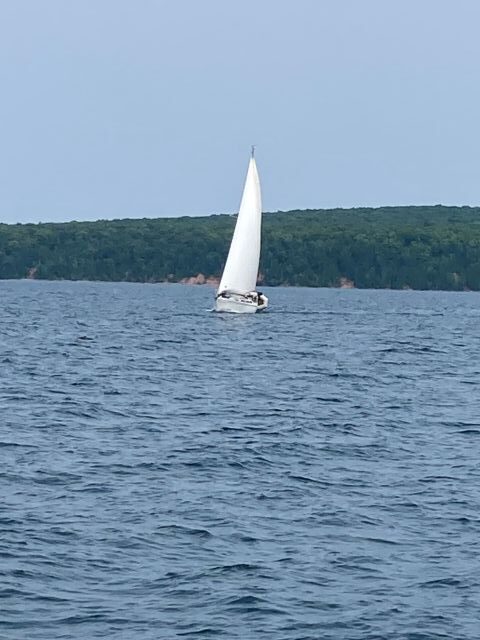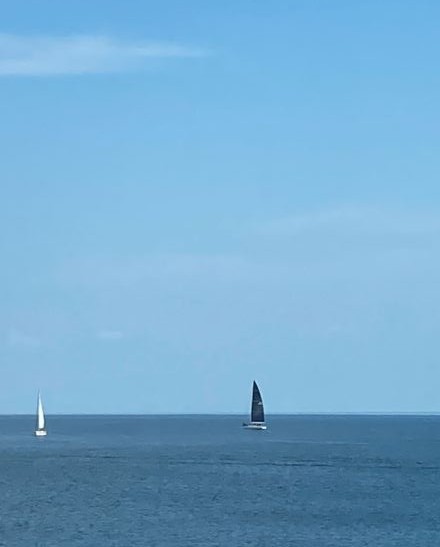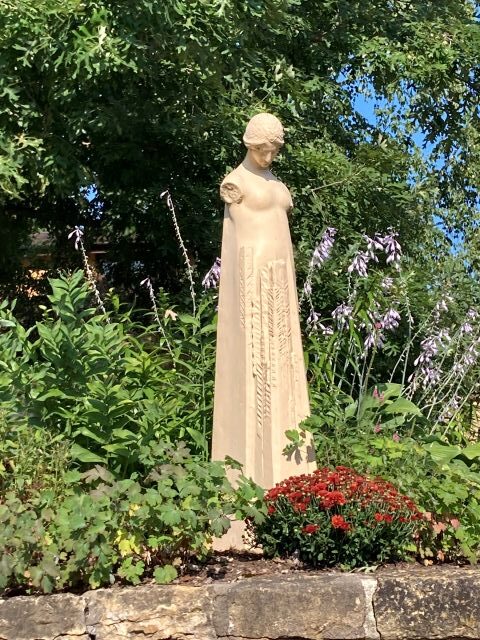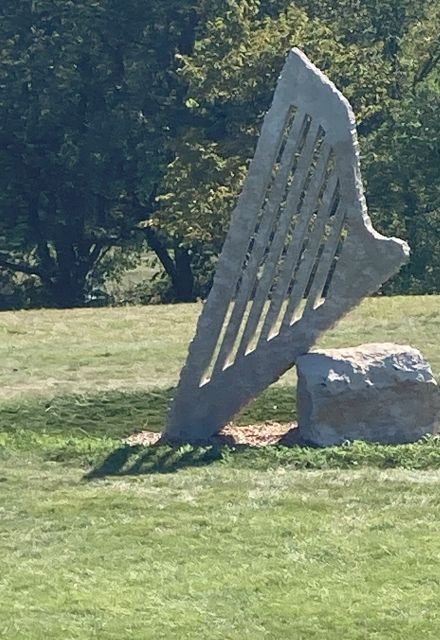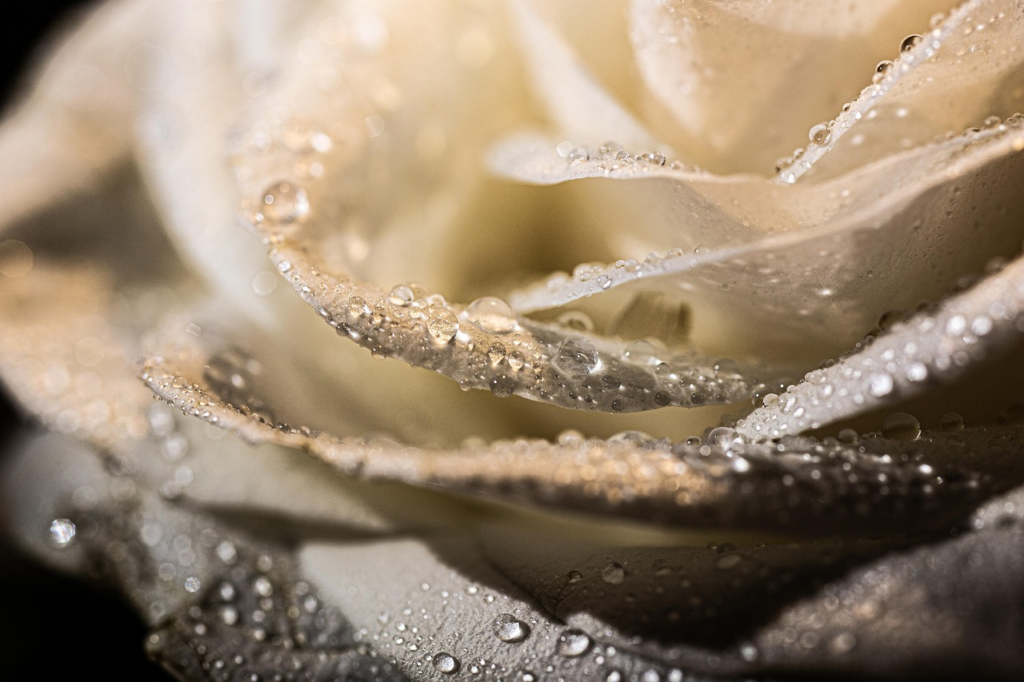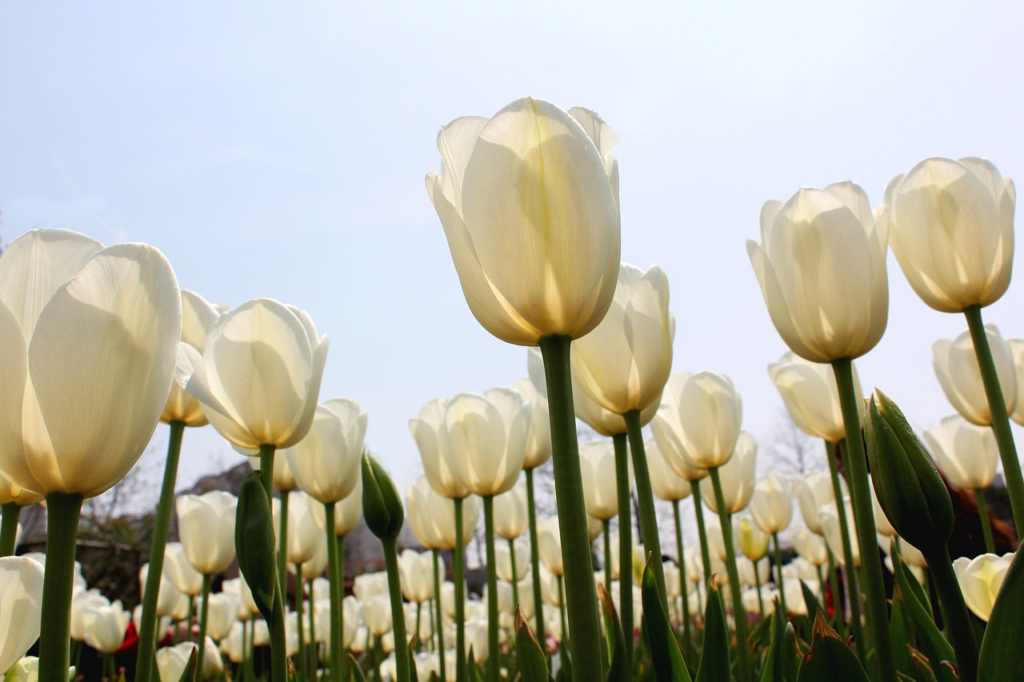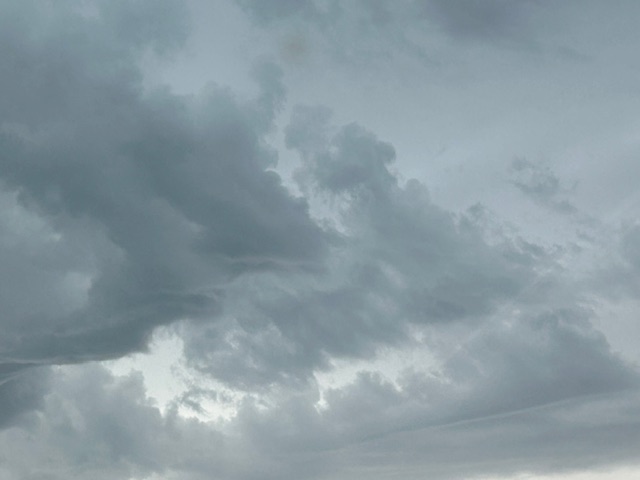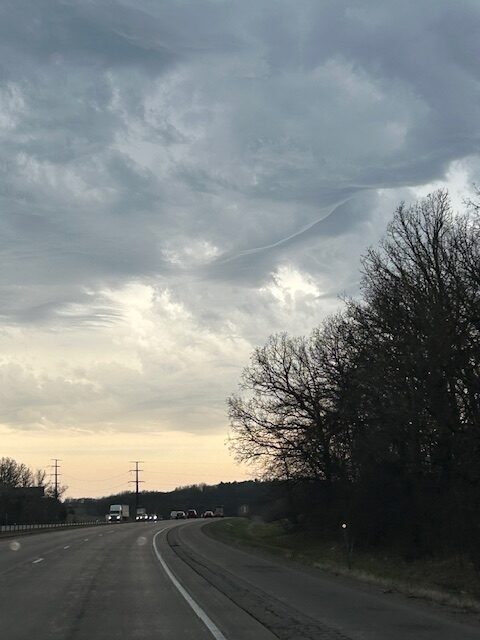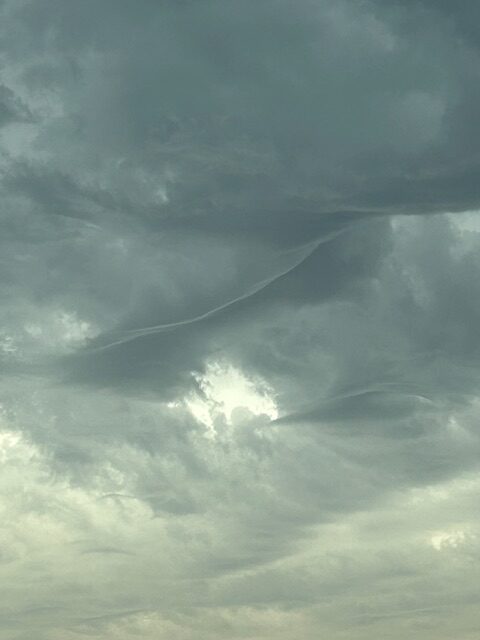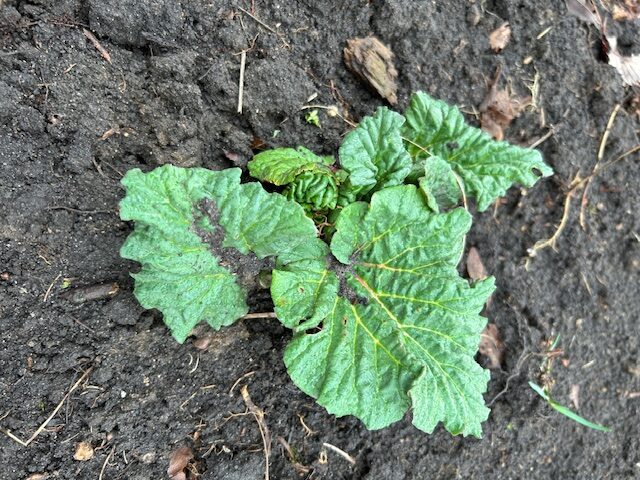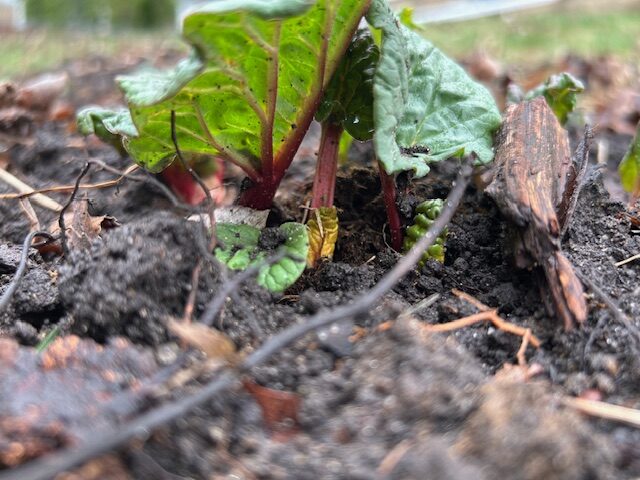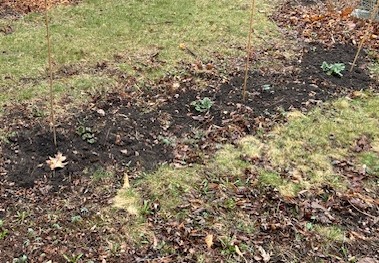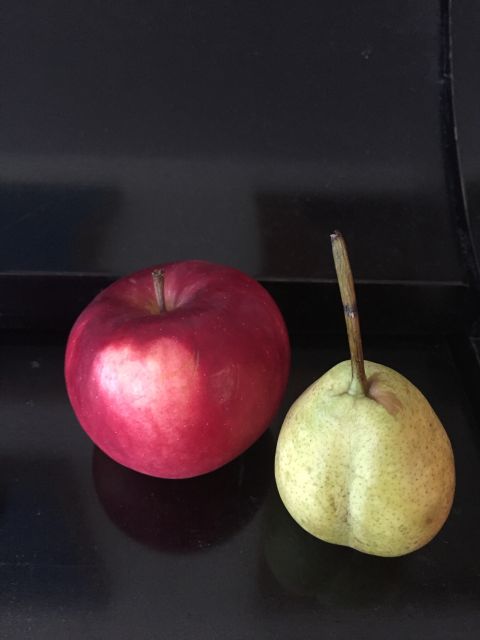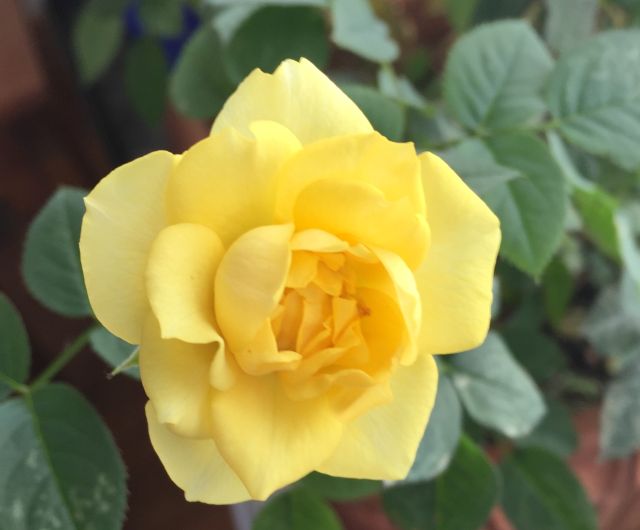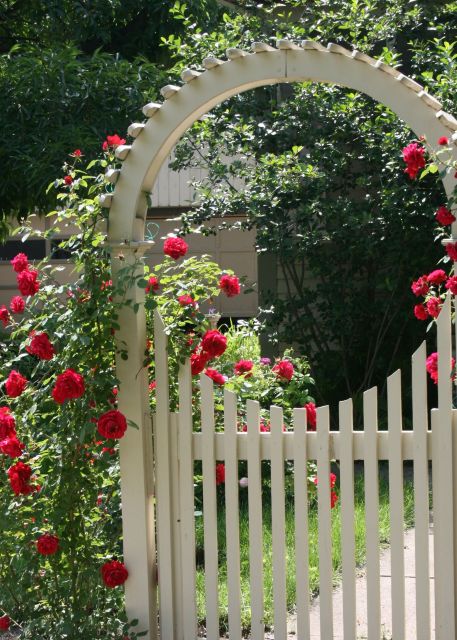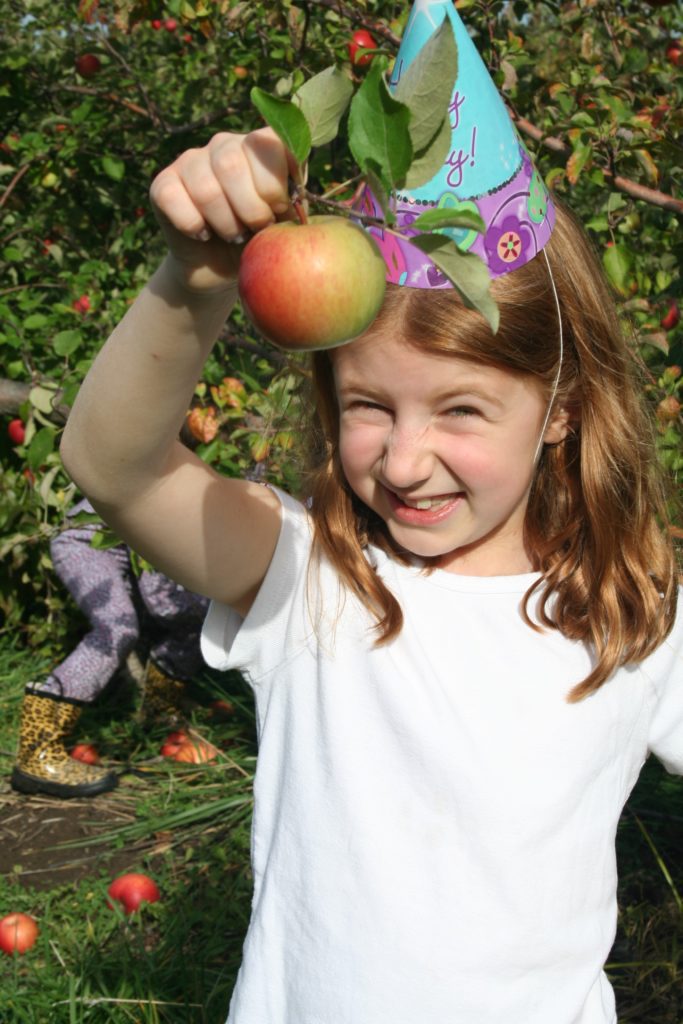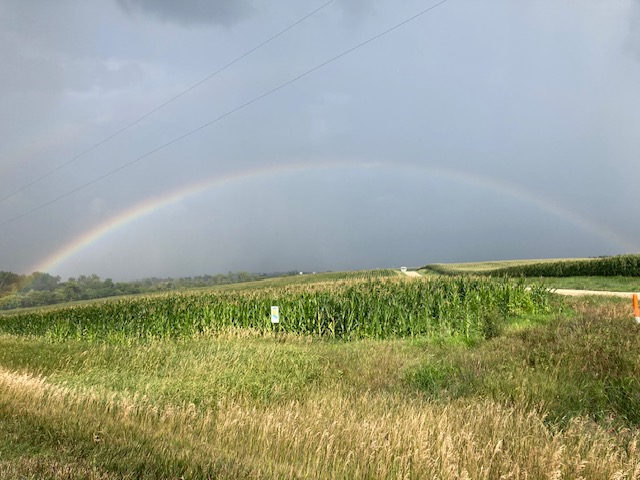
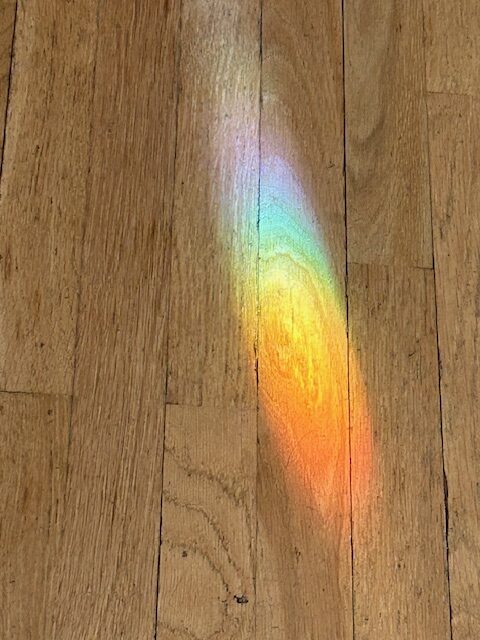
I associate outdoor light and shine with Earth Day, and I have every since I was sitting on our porch swing on Earth Day in 2000, with a nine-month-old Julia on my lap. The light rainfall ceased and a double rainbow appeared across the street. “Julia, Julia!” I said, “The Earth loves us back!”
Today’s poem, “Earth Day, 2025,” echoes that emotion for me.
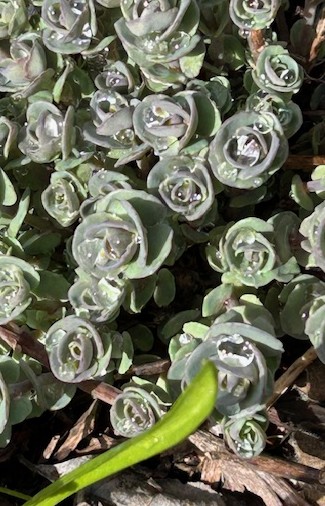
These photos of sedums in our front garden were taken yesterday. They are “glazed with rainwater” in a way that I think that William Carlos Williams would appreciate, and we are thrilled that these robust, low-lying plants are coming up again, vernicose and welcome.
The prompt word that I chose today from Rosendahl’s glossary, “vernicose,” was not known to me before. I was quite taken with its definition, “shiny, as though varnished,” especially when applied to growing plants. As I sought to learn more online, I was questioned repeatedly about the spelling–did I not mean “varicose”?–no, I did not! I conclude that vernicose is not a commonly used word. I did, however, learn that vernicose leaves, especially in houseplants, are a sign of radiant health.
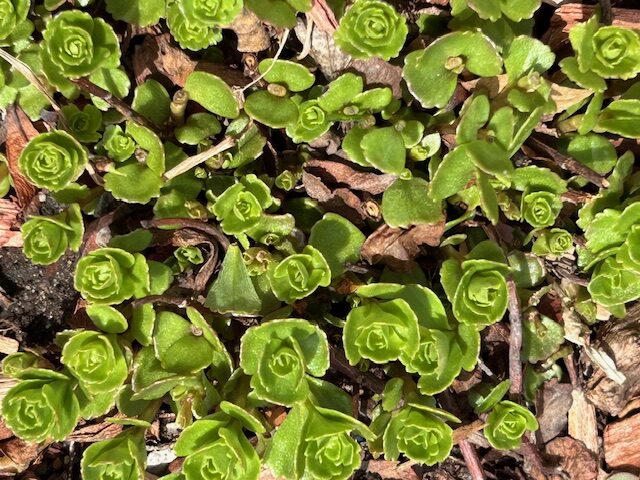
Wishing you a day of brightness and brilliant health, and the same to our beloved planet, Earth! LESLIE
